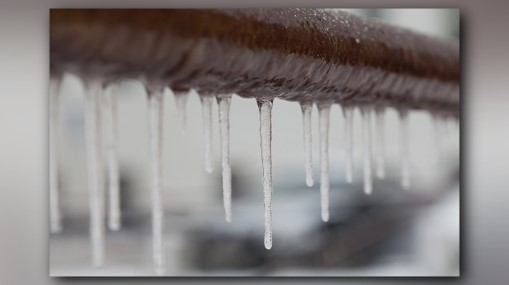Shielding Pipes from Cold Weather Damage: Essential Tips
Shielding Pipes from Cold Weather Damage: Essential Tips
Blog Article
What are your opinions about Helpful Tips to Prevent Frozen Pipes this Winter?

Winter can damage your plumbing, particularly by freezing pipes. Here's exactly how to avoid it from happening and what to do if it does.
Intro
As temperatures drop, the threat of icy pipes increases, possibly leading to expensive repair services and water damages. Recognizing exactly how to avoid frozen pipes is essential for property owners in cold climates.
Avoidance Tips
Protecting prone pipes
Cover pipelines in insulation sleeves or use warmth tape to secure them from freezing temperatures. Concentrate on pipelines in unheated or exterior areas of the home.
Home heating strategies
Keep interior areas adequately heated, particularly locations with pipes. Open up closet doors to enable warm air to circulate around pipes under sinks.
Just how to identify frozen pipes
Search for lowered water circulation from taps, uncommon smells or sounds from pipelines, and noticeable frost on subjected pipelines.
Long-Term Solutions
Architectural modifications
Think about rerouting pipes away from exterior wall surfaces or unheated areas. Include added insulation to attics, basements, and crawl spaces.
Updating insulation
Invest in high-grade insulation for pipes, attics, and walls. Proper insulation helps preserve constant temperature levels and lowers the danger of frozen pipes.
Protecting Outdoor Pipes
Yard hose pipes and outdoor faucets
Separate and drain pipes garden tubes prior to winter season. Install frost-proof faucets or cover outside faucets with shielded caps.
Comprehending Icy Pipes
What causes pipes to ice up?
Pipes ice up when subjected to temperature levels below 32 ° F (0 ° C) for expanded periods. As water inside the pipelines ices up, it broadens, taxing the pipe walls and possibly triggering them to break.
Threats and problems
Icy pipelines can bring about water supply disruptions, residential property damages, and pricey repair services. Ruptured pipes can flood homes and cause extensive architectural damages.
Signs of Frozen Piping
Determining frozen pipelines early can avoid them from bursting.
What to Do If Your Pipelines Freeze
Immediate actions to take
If you presume frozen pipelines, keep taps open to soothe pressure as the ice thaws. Use a hairdryer or towels taken in hot water to thaw pipes gradually.
Conclusion
Protecting against frozen pipes calls for proactive procedures and fast reactions. By comprehending the reasons, signs, and preventive measures, home owners can protect their plumbing during winter.
5 Ways to Prevent Frozen Pipes
Drain Outdoor Faucets and Disconnect Hoses
First, close the shut-off valve that controls the flow of water in the pipe to your outdoor faucet. Then, head outside to disconnect and drain your hose and open the outdoor faucet to allow the water to completely drain out of the line. Turn off the faucet when done. Finally, head back to the shut-off valve and drain the remaining water inside the pipe into a bucket or container. Additionally, if you have a home irrigation system, you should consider hiring an expert to clear the system of water each year.
Insulate Pipes
One of the best and most cost-effective methods for preventing frozen water pipes is to wrap your pipes with insulation. This is especially important for areas in your home that aren’t exposed to heat, such as an attic. We suggest using foam sleeves, which can typically be found at your local hardware store.
Keep Heat Running at 65
Your pipes are located inside your walls, and the temperature there is much colder than the rest of the house. To prevent your pipes from freezing, The Insurance Information Institute suggests that you keep your home heated to at least 65 degrees, even when traveling. You may want to invest in smart devices that can keep an eye on the temperature in your home while you’re away.
Leave Water Dripping
Moving water — even a small trickle — can prevent ice from forming inside your pipes. When freezing temps are imminent, start a drip of water from all faucets that serve exposed pipes. Leaving a few faucets running will also help relieve pressure inside the pipes and help prevent a rupture if the water inside freezes.
Open Cupboard Doors
Warm your kitchen and bathroom pipes by opening cupboards and vanities. You should also leave your interior doors ajar to help warm air circulate evenly throughout your home.

Do you enjoy reading up on Winter Plumbing Precautions: Preventing Frozen Pipes? Create a remark further down. We would be pleased to listen to your reactions about this page. We hope to see you back again soon. I beg you take the opportunity to distribute this write-up if you enjoyed it. Thanks for taking the time to read it.
Visit My Web Page Report this page